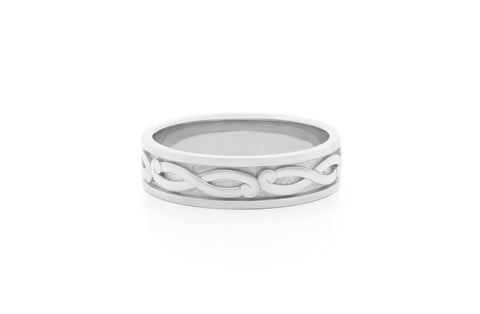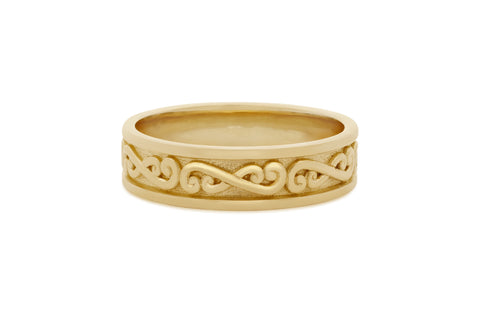Precious Metals Buying Guide

The Village Goldsmith’s experienced craftspeople are trained to work with all precious metals - from platinum and gold to sterling silver. The range of metals to choose from when crafting jewellery is quite extensive. To help with the selection process, we've provided a list of the most popular metals we work with in our workshop and described their distinctive qualities. We will always recommend the most appropriate metal in accordance with the ring or jewellery style, wearability, and your preferred budget. At The Village Goldsmith, we pride ourselves on the quality of our craftsmanship and endeavour to ensure that all materials used in the crafting of our jewellery are of the highest quality and ethically sourced.

Yellow Gold
Pure gold is often referred to as 24 carat (ct in UK, k in US), but because it's quite soft and malleable, it's not always suitable for an item intended to be worn daily. A more durable choice is 9k, 14k, or 18k gold - which are pure gold that have been combined with other metal alloys to make it harder. The higher the carat grade, the richer the colour, more expensive, and more resistant to tarnishing it will be. These carat grades contain the following percentages of gold:
9 carat: 37.5%14 carat: 58.5%
18 carat: 75%

White Gold

White gold is made from yellow gold and an array of added metal alloys to create a whiter colour. Traditionally, rhodium plating is applied to white gold to give it its deeper, whiter, more platinum-like look. It's important to note that this plating does wear off and further applications of rhodium plating will be required to maintain the look over time. The scale of carat grading is the same for white gold as it is for yellow gold. The higher the carat grade of white gold, the deeper the gunmetal white colour.
Rose Gold

Rose gold is alloyed with a percentage of copper, which gives it its rosy pink tinge. With rose gold, the higher the carat grade the more subtle the colour appears.
Gold Buying Tips:
- For gold in general, the lower the carat grade, the higher the amount of other metals within the alloy which can increase the risk of allergic reaction.
- Always look for the carat mark – for example an 18ct/18K or 750 stamp on your jewellery.

Platinum
Platinum is the most durable and dense precious metal used in jewellery. Because it's the heaviest, it is the most resistant to wear and tear. Platinum is a steely white colour and many people are attracted to its pure lustre. Platinum used for jewellery is usually 95% pure and often combined with ruthenium alloy which provides for the highest purity. Alternatively, platinum can be combined with other alloys, including cobalt, copper or iridium. Platinum is naturally hypoallergenic and does not tarnish. An interesting final note: unlike many of its precious metal counterparts, when platinum is scratched, no metal is lost - rather the metal is "displaced" and can be polished back to its original state.
Tip: remember to check for the PT950/950 or PLAT stamp on your jewellery.
Palladium
Palladium is a platinum group metal that has an amazing similarity to platinum, but due to its use in the electronics industry it’s now the most expensive of the precious metals per gram so not as widely used in jewellery. It's not as dense as platinum with a density similar to gold - which means although its wearing capabilities won’t rival platinum, they will compare favourably with gold. Like platinum, palladium is naturally silvery-white in colour and therefore does not require plating as part of its maintenance.

Titanium
Titanium is a natural element (no. 22 on the periodic table) and has a smoky-grey colour. Titanium is 100% hypo-allergenic, light in weight, very strong, and has impressive durability (superior to gold and platinum). It is also resistant to corrosion and tarnishing. Titanium rings are extremely difficult to adjust in size so care should be taken when selecting the initial size for purchase.

Sterling Silver
Sterling silver an affordable option, but is prone to scratches, tarnish and general wear and tear. Because of this, sterling silver is not the best choice for engagement rings, wedding bands or any jewellery that will be worn daily.
It's important to us that all of our crafting processes - including diamond and precious metal sourcing - offer transparency so that our clients understand where each element of their jewellery has come from. If you’d like to keep learning about our standards and practices, check out our ethical diamond sourcing and precious metal sourcing practices. We invite you to explore our range of engagement rings and fine jewellery which you can be confident was sourced and crafted with transparency and care. If you have any questions about precious metals, please get in touch with us.










